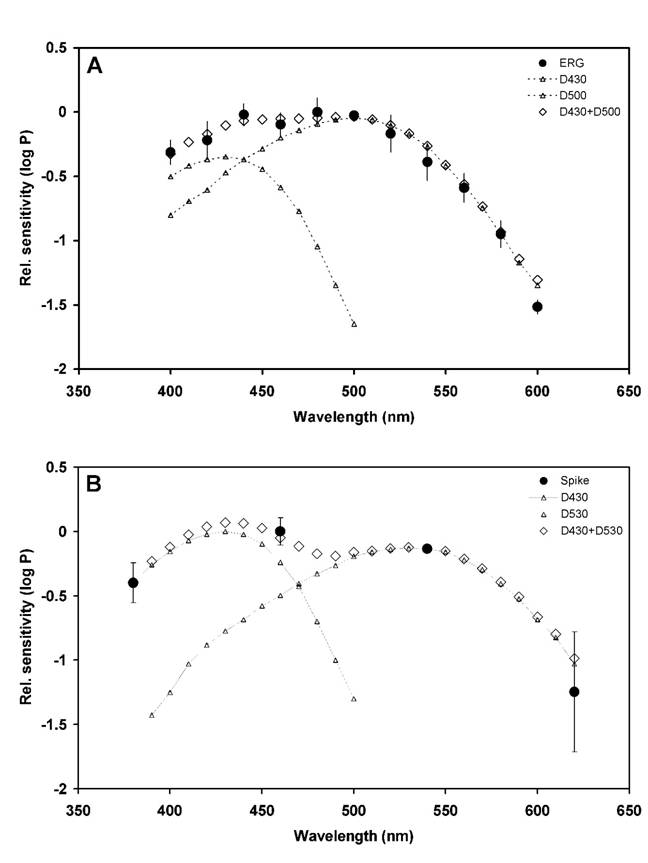Evidence for a Two Pigment Visual System
in the Fiddler Crab, Uca thayeri
Ken Horch, Michael Salmon and Richard Forward

Intraocular recordings were made from the eyestalks of dark adapted
fiddler crabs (Uca thayeri)
during presentation of monochromatic light flashes of different wavelengths and
intensities. Two types of signals were recorded in different
experiments: slow potentials (ERG) and fast potentials (spikes).
The latter were also recorded in the presence of a continuous green or red
adapting light. The resulting visual spectral sensitivity curves, when
fit to rhodopsin-based visual pigment absorption
spectra (from Dartnall nomograms),
indicated the presence of two visual pigments, one with an absorption maximum
near 430 nm, and the other with a peak absorption between 500 and 540 nm.
The data also provided evidence for some differential bleaching of the pigments
in the presence of a colored adapting light, but most of the adaptation effect
was probably due to changes in screening pigment and neural desensitization or
inhibition. These two observations suggest that an adequate substrate for
color vision may exist in this and other species of fiddler crabs. The
ERG and spike recording methods produced similar visual sensitivity data,
suggesting that latter technique, a much more efficient way of collecting data
that is physiologically relevant, may be the method of choice for determining
spectral sensitivity in crustaceans.